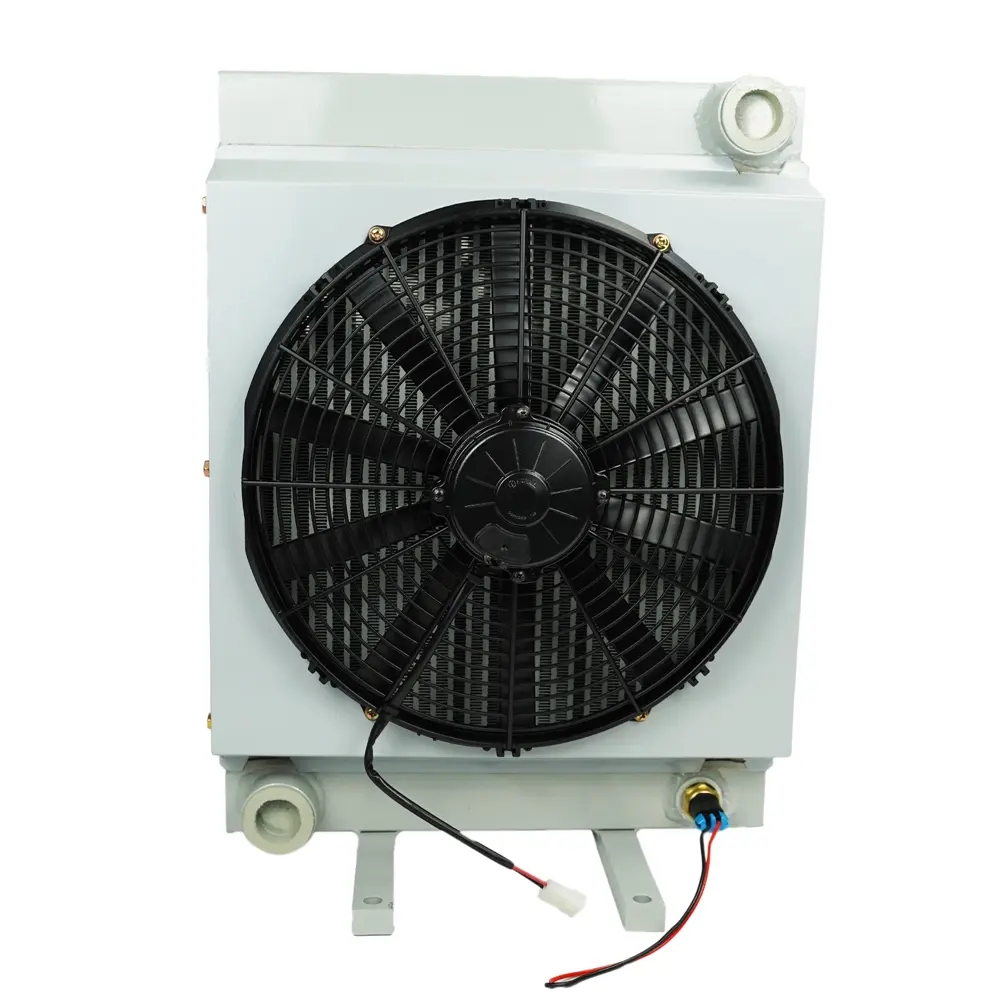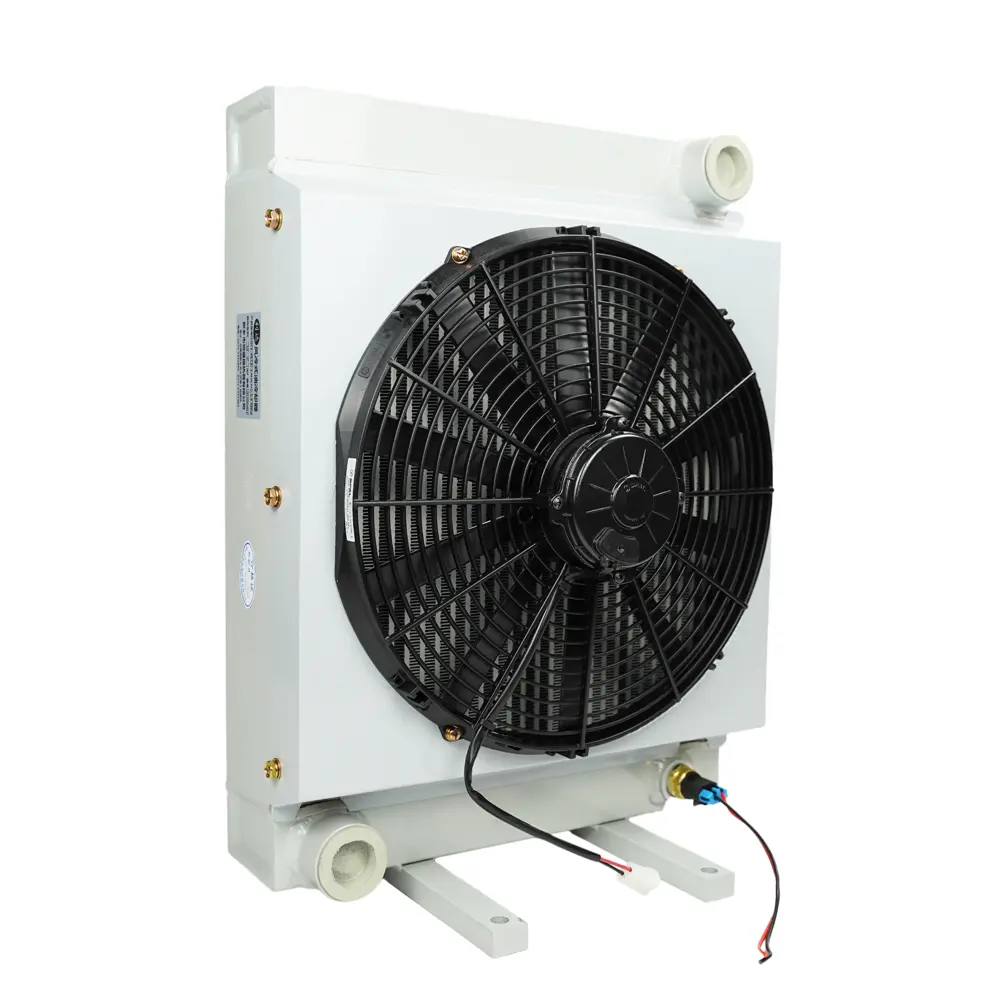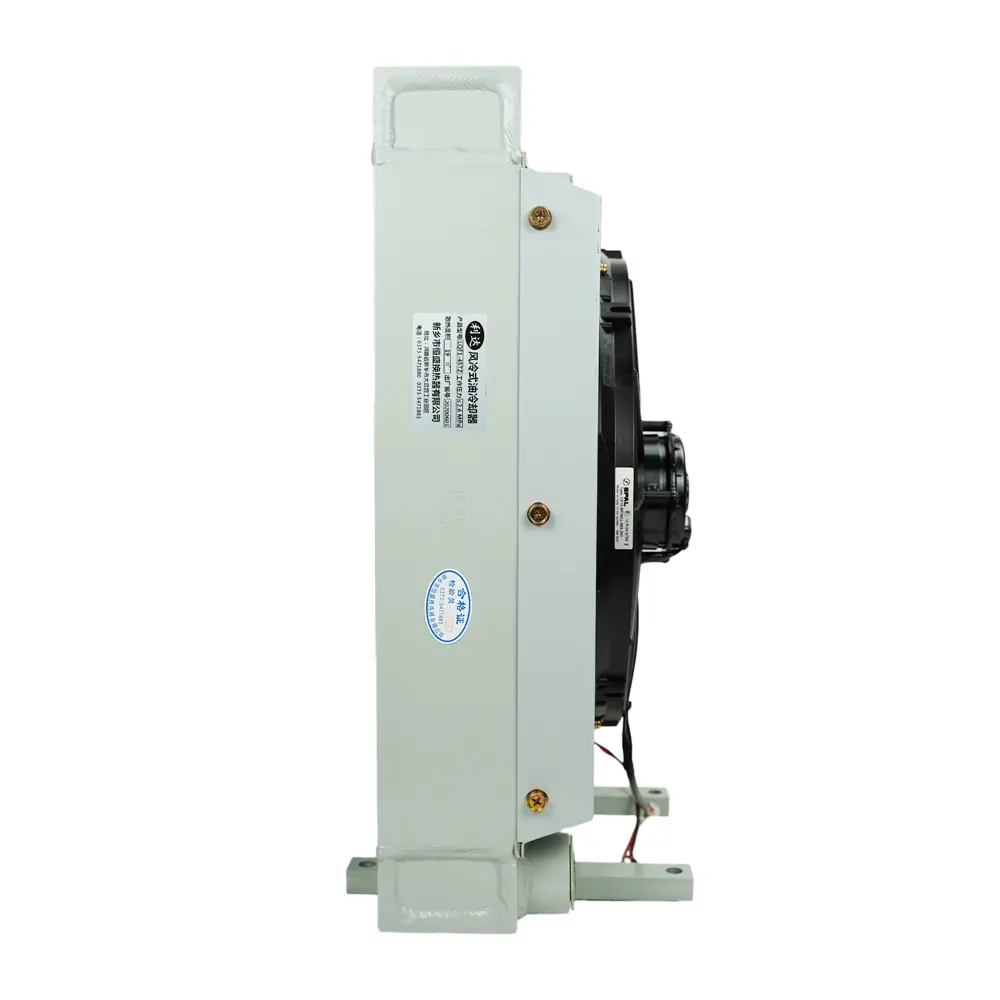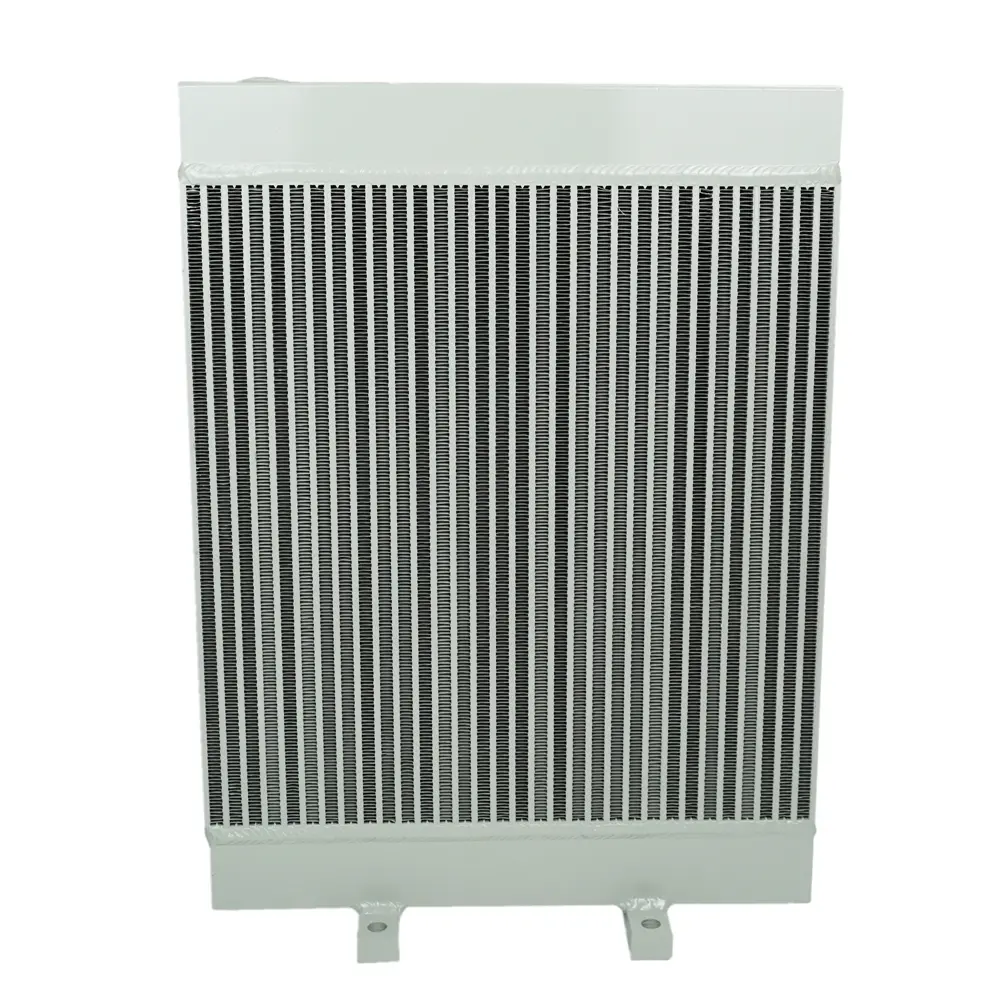The core working principle of a hydraulic system cooler is heat exchange. It reduces the oil temperature by transferring heat from the high-temperature hydraulic oil (which heats up during the operation of the hydraulic system) to a low-temperature cooling medium (usually cold air). The specific process is as follows:
- High-temperature hydraulic oil flows into the cooler from the hydraulic system circuit;
- In the internal heat exchanger of the cooler (such as a Plate-Fin Heat Exchanger), the high-temperature oil fully contacts the forced-flow cold air;
- The heat in the oil is transferred to the cold air through the metal walls of the heat exchanger, reducing the oil temperature to the normal operating temperature of the system;
- The cooled hydraulic oil flows back to the system, ensuring the continuous and stable operation of the main engine.
The plate-fin heat exchanger is a commonly used type in hydraulic engineering. It has a compact structure and high heat exchange efficiency, which can quickly cool the oil and meet the dynamic heat dissipation requirements of hydraulic systems.
- Working pressure: The normal working pressure does not exceed 2.6MPa。
The power devices usually have the following options:
A. AC motors: AC380V, AC220V;
B. DC motors: DC24V, DC12V;
C. Hydraulic motors;
D. Explosion-proof motors.



